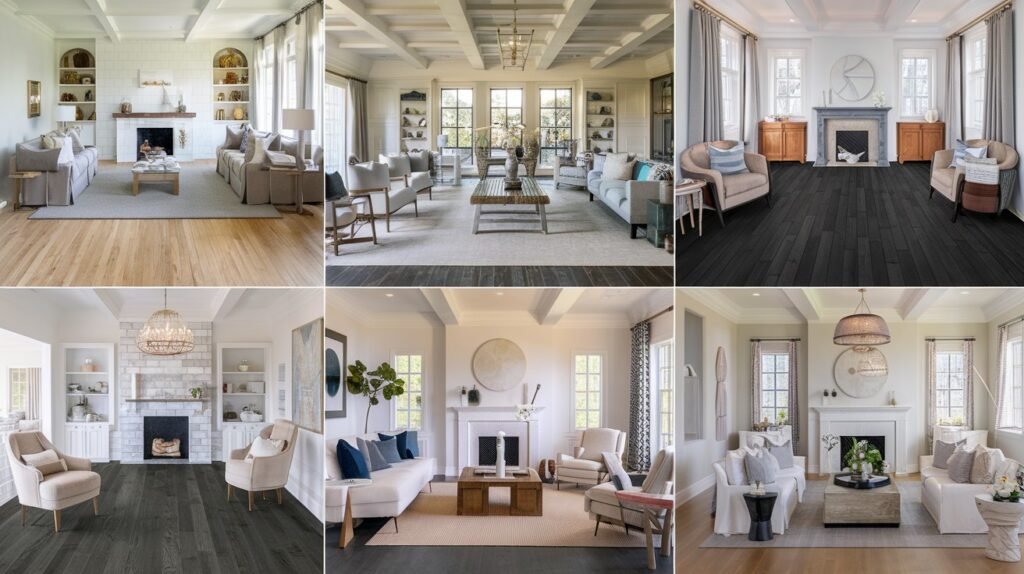Your floors set the stage for everything else in your home.
When it comes to hardwood, the color you choose today will influence your space for decades to come. But with countless options available, how do you pick something that won’t feel outdated in five years?
The secret lies in selecting hardwood floor colors that never go out of style.
These enduring shades have proven their staying power across generations, working beautifully with changing trends while maintaining their appeal.
Smart homeowners know that timeless doesn’t mean boring. The right classic color creates a versatile canvas that adapts to your evolving taste, supports your decor choices, and maintains strong resale value.
Let’s find out eleven proven hardwood floor colors that never go out of style and help you make a choice you’ll love for years to come.
Why Color Choice Matters for Hardwood Floors?
Visual Impact on Room Size, Lighting, and Mood
- Lighter floors make small spaces appear larger and more open
- Dark floors create intimacy and warmth in spacious rooms
- Medium tones provide balanced lighting that works in most settings
- Cool-toned floors feel fresh and modern, while warm tones feel cozy
- Reflective finishes bounce light around the room, brightening dim spaces
- Matte finishes absorb light for a more subdued, relaxed atmosphere
Compatibility and Long-Term Value
Your floor color determines how easily you can change your home’s look over time.
Neutral, classic tones work with both contemporary minimalism and traditional farmhouse styles, letting you update furniture and accessories without clashing.
This flexibility becomes crucial when life changes, new relationships, growing families, or shifting personal tastes occur.
From a financial perspective, timeless colors protect your investment.
Potential buyers feel confident about classic shades, knowing they won’t need immediate replacement.
Bold or trendy colors might reflect your current personality, but they can limit your home’s appeal and require costly refinishing sooner than expected.
Factors That Make a Hardwood Floor Color Timeless
Neutral Undertones
The most enduring hardwood colors feature balanced, subtle undertones rather than bold or saturated hues.
These neutral bases, warm browns, soft grays, and natural wood tones provide stability that outlasts fleeting color trends. They create a foundation that feels fresh decade after decade.
Versatility Across Interior Styles
Truly timeless colors transition seamlessly between design movements. A classic medium oak works equally well in a sleek modern kitchen, a cozy traditional living room, or a rustic farmhouse dining area.
This adaptability means your floors support your style evolution rather than limiting it.
Practical Durability
Some colors naturally camouflage in daily life. Medium tones with varied grain patterns hide dust, pet hair, and minor scratches better than very light or very dark options.
This practical advantage keeps your floors looking good with normal maintenance.
Universal Wall Compatibility
The best hardwood colors complement both light and dark wall treatments. This flexibility lets you paint walls without worrying about clashing undertones, giving you decorating freedom that lasts.
11 Hardwood Floor Colors That Never Go Out of Style
1. Classic Natural Oak
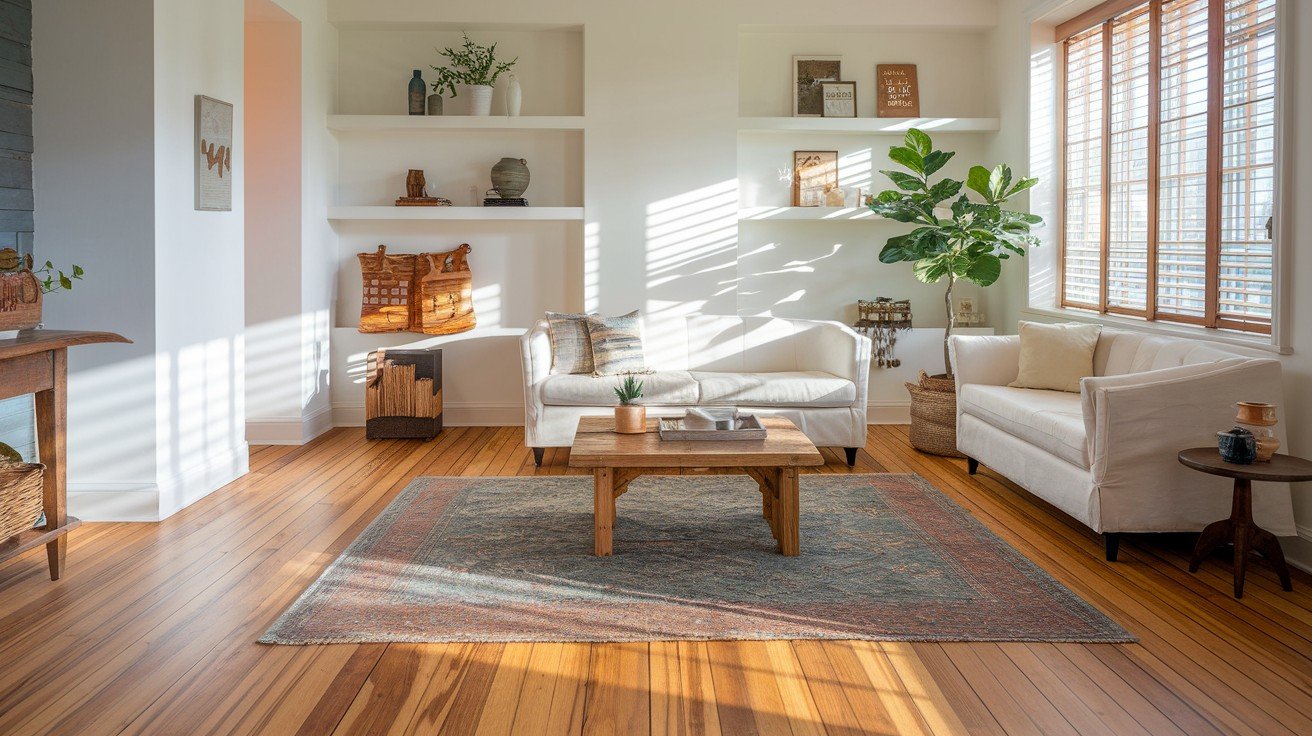
This light to medium tone showcases wood’s natural beauty with warm honey and amber highlights.
Its balanced color works with any decor style, from contemporary to farmhouse. The subtle grain variation helps hide daily wear while maintaining a fresh, clean appearance.
Natural oak brightens spaces without overwhelming them, making it perfect for living rooms, kitchens, and bedrooms where you want timeless warmth.
2. Walnut Brown
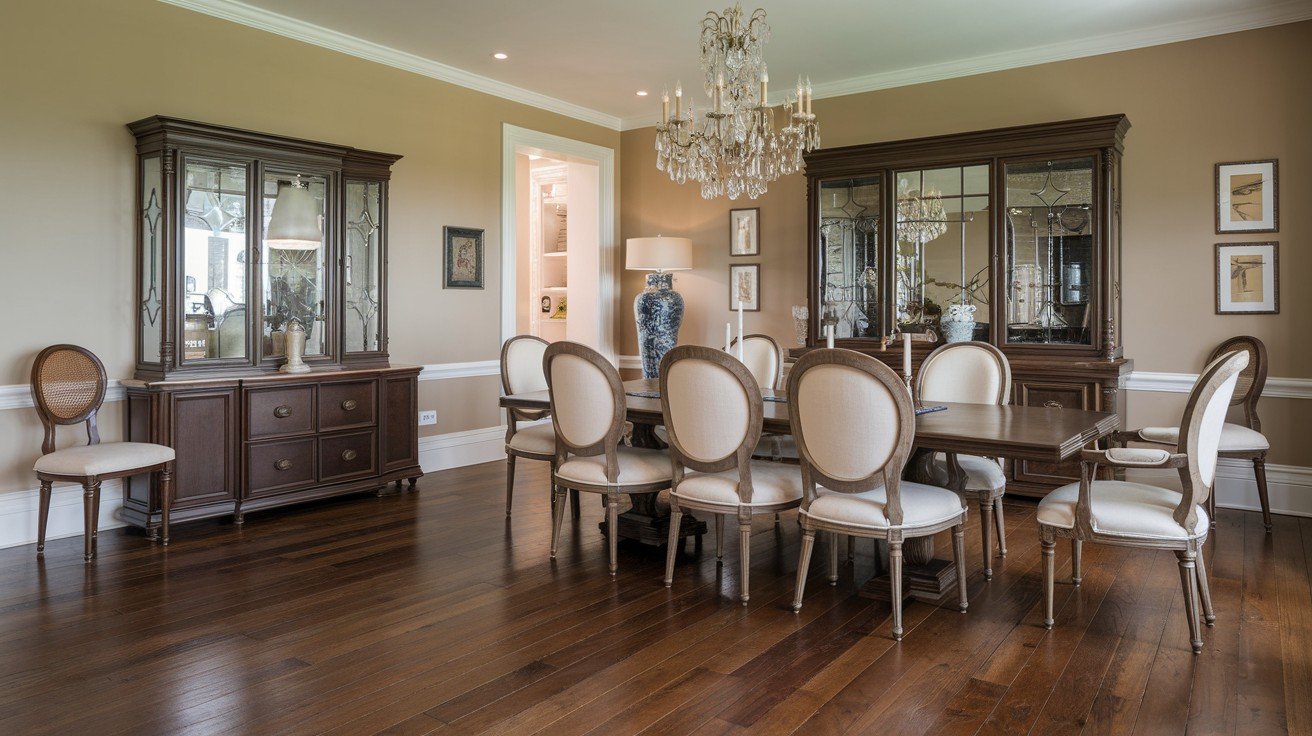
Rich chocolate tones with deep brown undertones create an instantly sophisticated atmosphere. This color brings warmth and depth to formal spaces while remaining versatile enough for casual areas.
Walnut brown pairs beautifully with both light and dark furnishings, offering a classic foundation that feels expensive and refined.
Ideal for dining rooms, studies, and master bedrooms where you want lasting sophistication.
3. Espresso
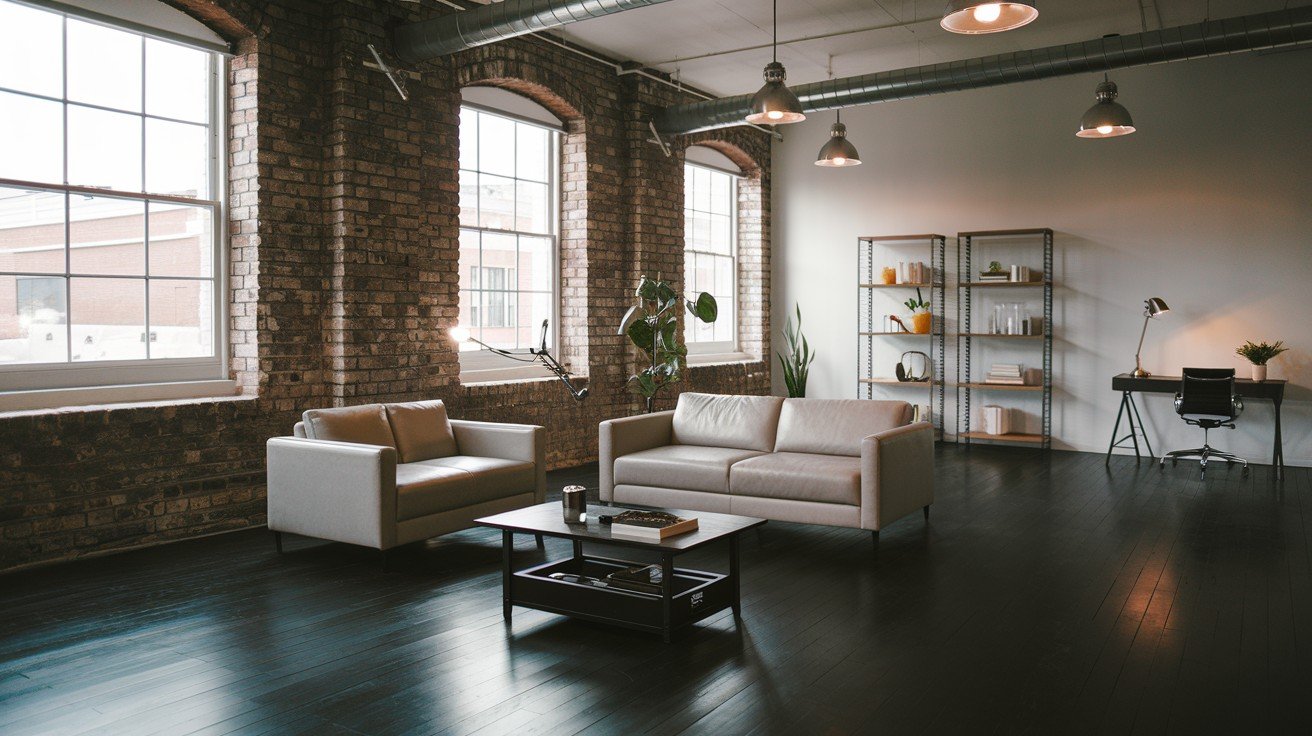
This nearly black finish creates a dramatic contrast while maintaining neutral versatility. Espresso floors ground a space with sophisticated depth, making rooms feel more intimate and luxurious.
The dark tone hides scuffs and daily wear exceptionally well, requiring less frequent touch-ups.
This color works beautifully in modern lofts, industrial-style homes, and contemporary spaces where you want bold visual impact without sacrificing timeless appeal.
4. Honey Blonde
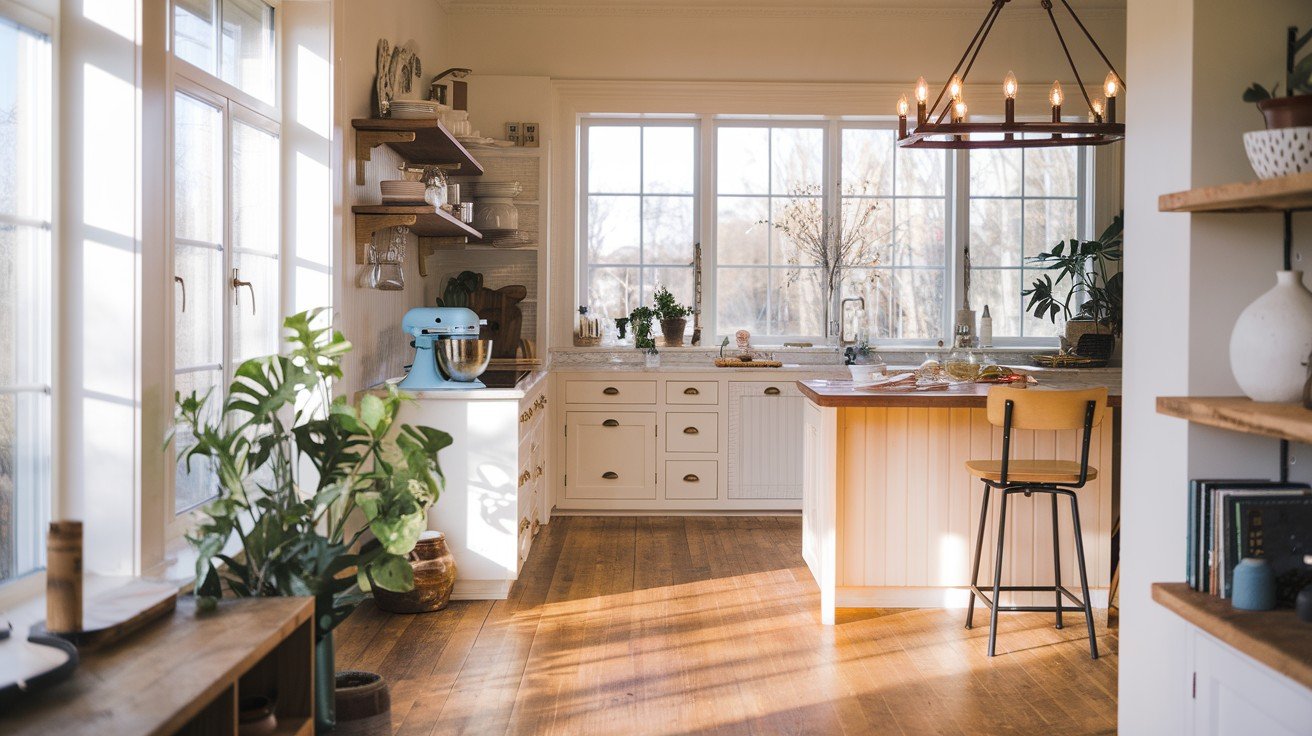
Golden undertones with warm amber highlights bring natural brightness to any room. This cheerful color reflects light beautifully, making smaller spaces feel larger and more open.
Honey blonde complements coastal themes, Scandinavian minimalism, and cozy cottage styles equally well.
The warm tone creates an inviting atmosphere that feels both relaxed and refined, making it perfect for family rooms, kitchens, and casual dining areas.
5. Warm Gray
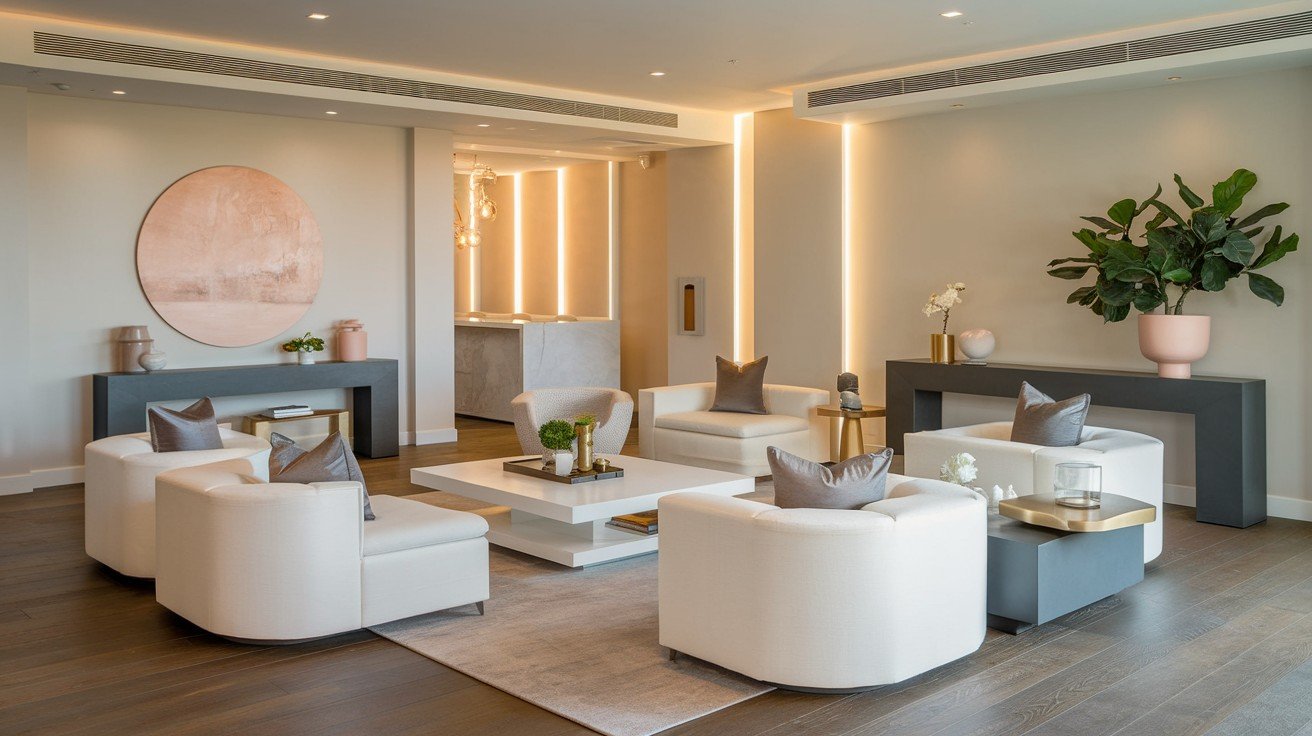
This sophisticated neutral combines gray’s contemporary appeal with subtle warm undertones that prevent coldness.
Warm gray floors provide the perfect backdrop for both colorful and monochromatic decor schemes. The color feels fresh and modern while maintaining enough warmth to feel welcoming.
Ideal for open-concept homes, modern bathrooms, and spaces where you want a clean, updated look that won’t feel dated.
6. Greige (Gray + Beige)
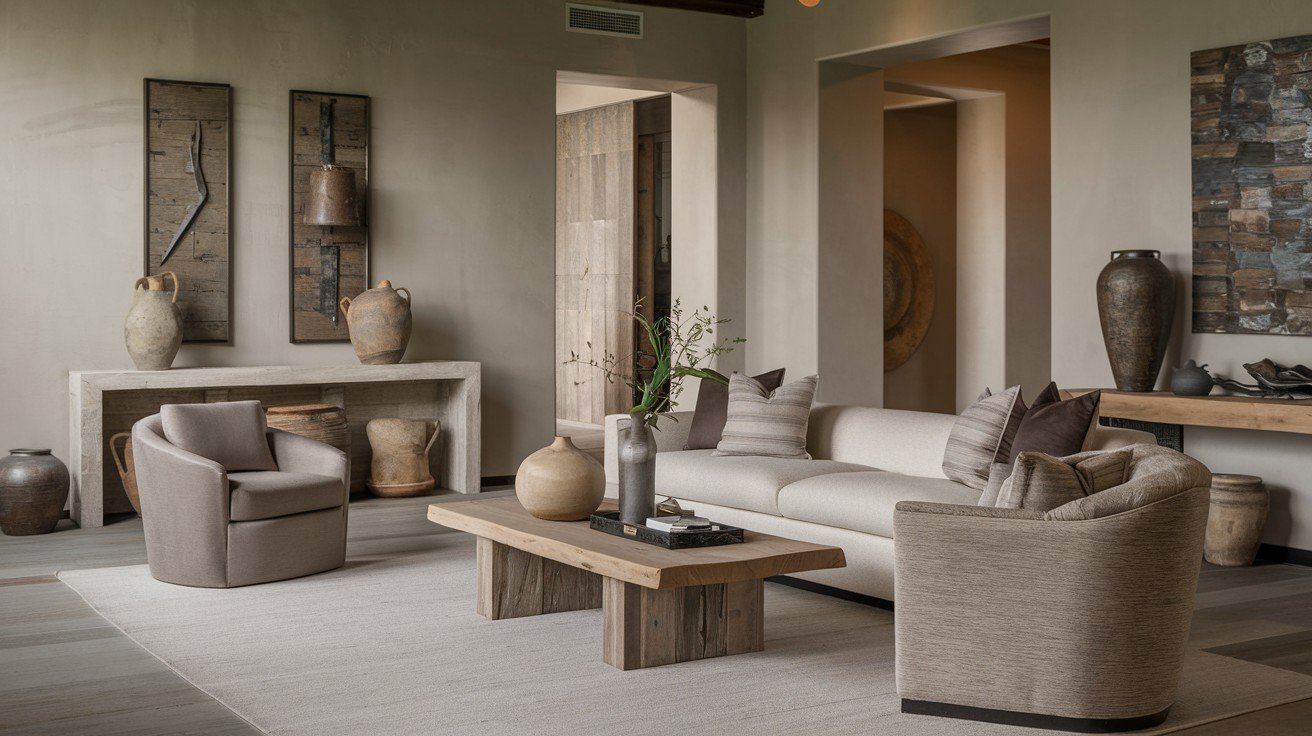
This hybrid color masterfully blends gray’s modern sophistication with beige’s welcoming warmth.
Greige floors solve the common dilemma of choosing between cool and warm tones by offering both. The balanced undertones complement any color scheme, from bold jewel tones to soft pastels.
This versatile shade works seamlessly with farmhouse, transitional, and contemporary styles, making it perfect for open floor plans where multiple design elements need to harmonize effortlessly.
7. Chestnut
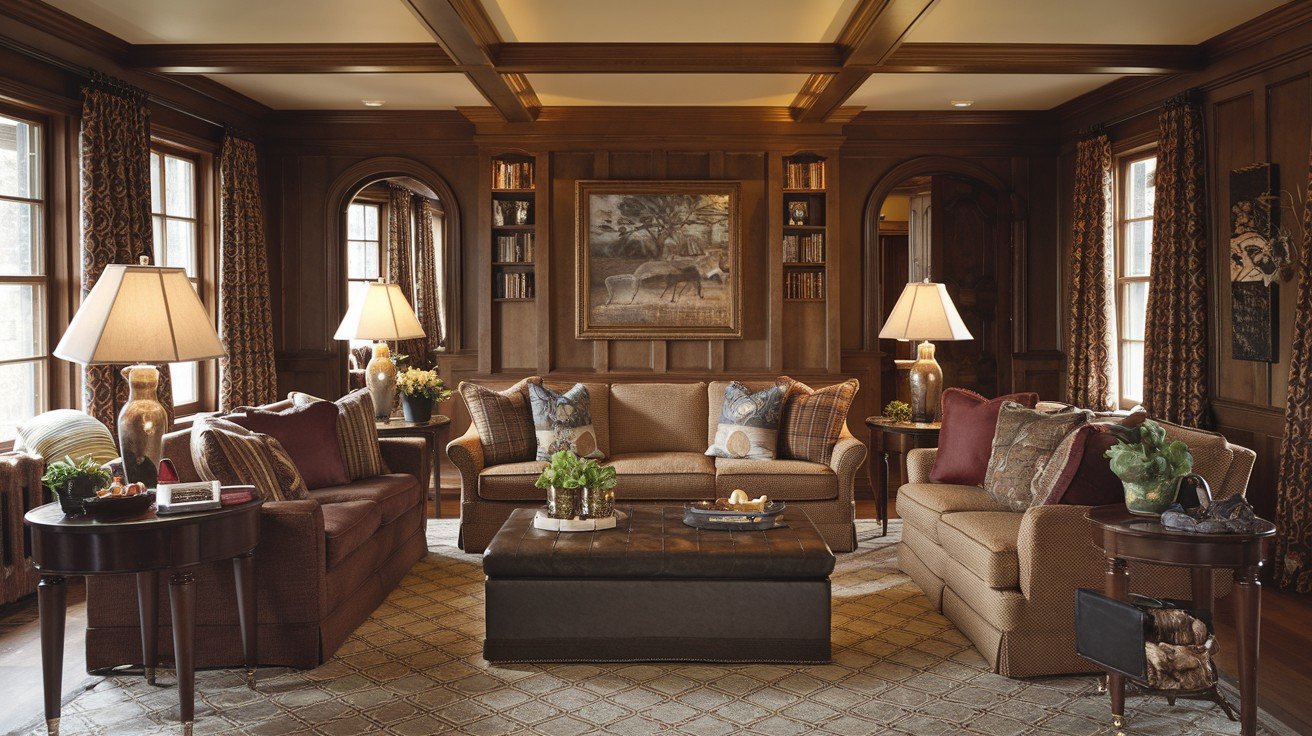
Medium-dark brown with subtle red undertones creates a rich, inviting foundation that feels both rustic and refined.
Chestnut’s natural warmth brings character to traditional and transitional spaces while maintaining enough sophistication for formal areas.
The varied grain patterns and depth of color help camouflage everyday wear. This shade works beautifully in family rooms, hallways, and bedrooms where you want cozy warmth with lasting style appeal.
8. Whitewashed Oak
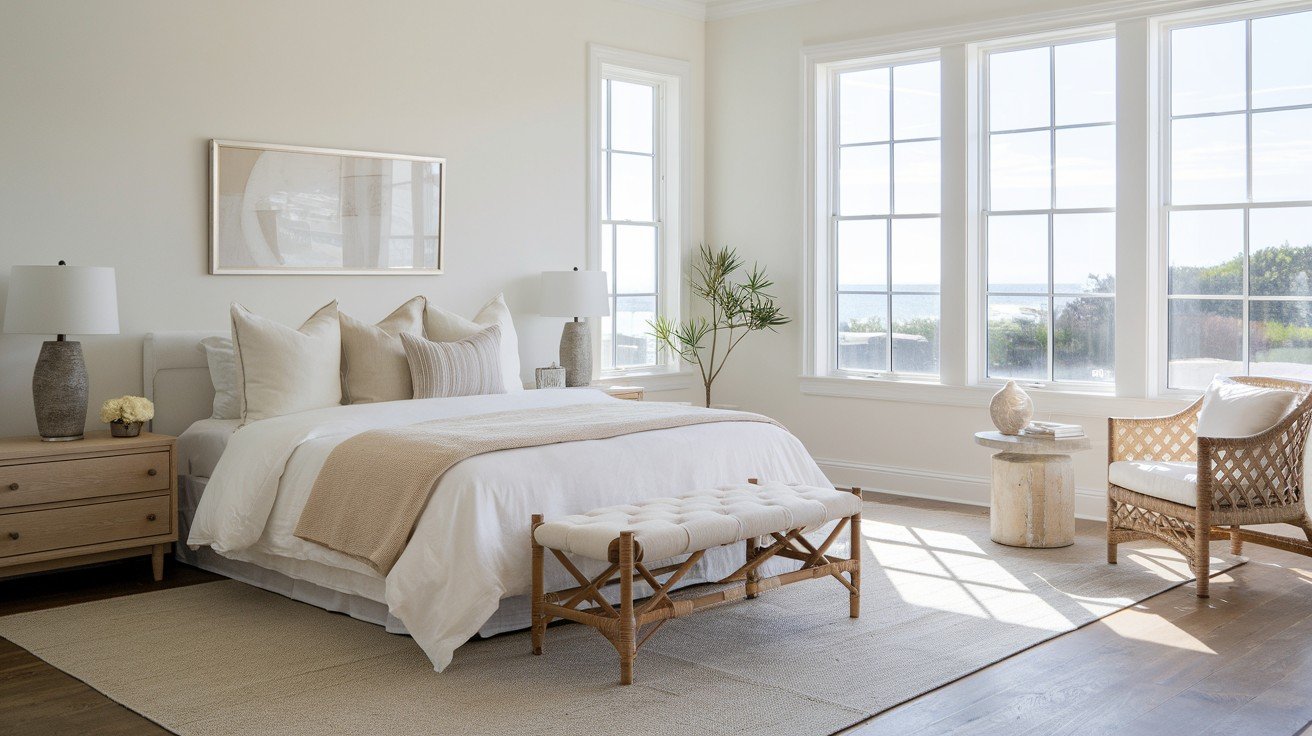
This light, weathered finish offers Scandinavian-inspired simplicity with subtle texture and grain variation.
Whitewashed oak brightens spaces naturally while maintaining wood’s organic character. The soft, muted tone creates a calming backdrop that makes rooms feel larger and more serene.
Perfect for coastal homes, modern farmhouses, and minimalist spaces where you want clean lines and airy openness without sacrificing natural warmth and texture.
9. Charcoal
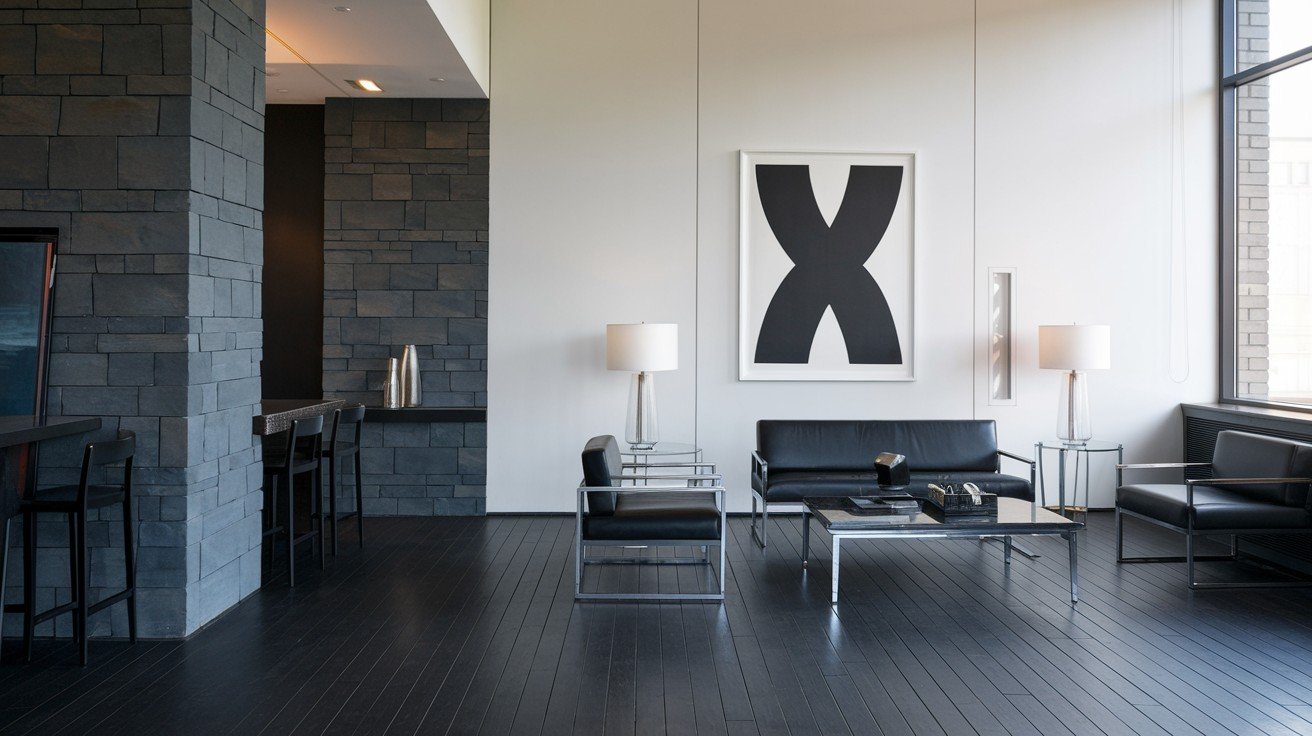
This bold, cool-toned dark floor creates a striking visual contrast while maintaining sophisticated neutrality.
Charcoal’s deep gray undertones add dramatic depth to spaces without the intensity of pure black.
The color works exceptionally well with white walls and bright accents, creating a modern backdrop that feels grounded and substantial.
Ideal for contemporary homes, urban lofts, and spaces where you want to make a confident design statement while ensuring long-term versatility.
10. Satin Ebony
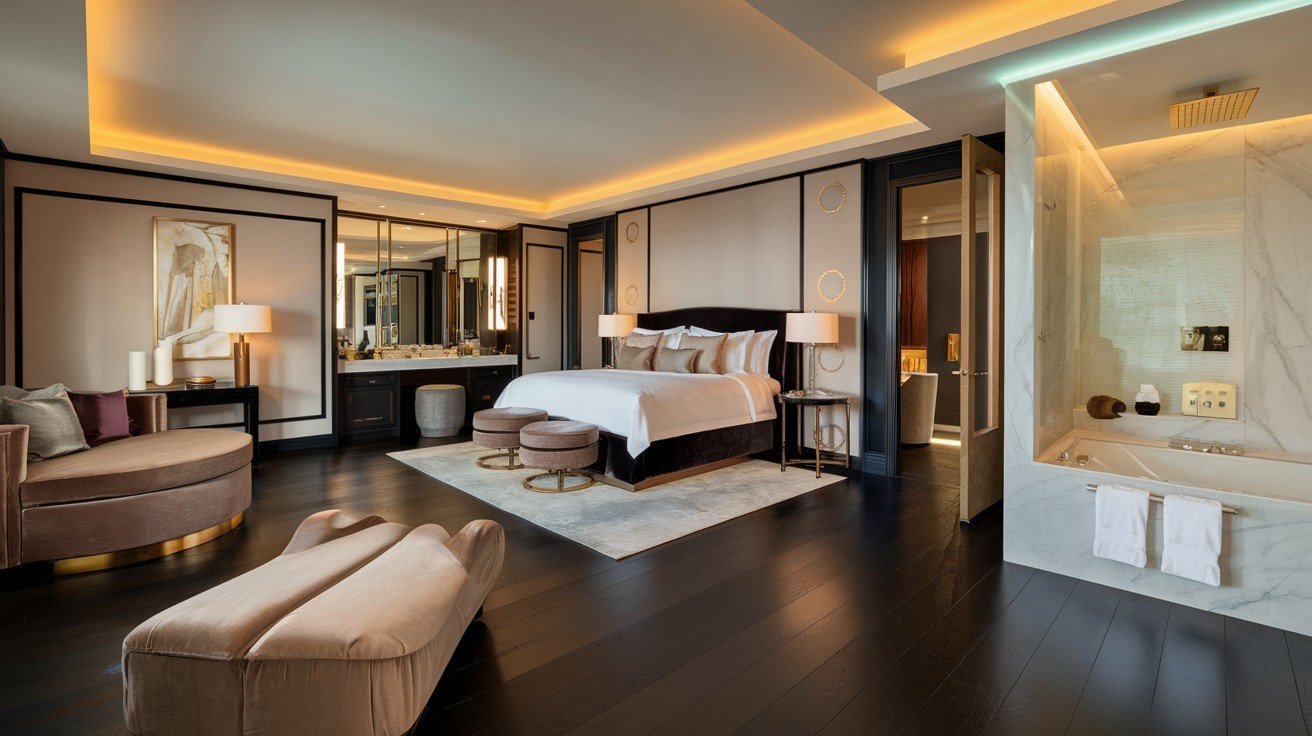
A softened interpretation of classic black flooring, satin ebony offers luxury without harshness. This refined dark tone creates an expensive, spa-like atmosphere that feels both dramatic and calming.
The subtle sheen reflects light gently, preventing rooms from feeling too dark or closed in. Perfect for master suites, formal dining rooms, and minimalist spaces where you want sophisticated drama.
The timeless appeal works beautifully with both metallic accents and natural textures.
11. Natural Maple
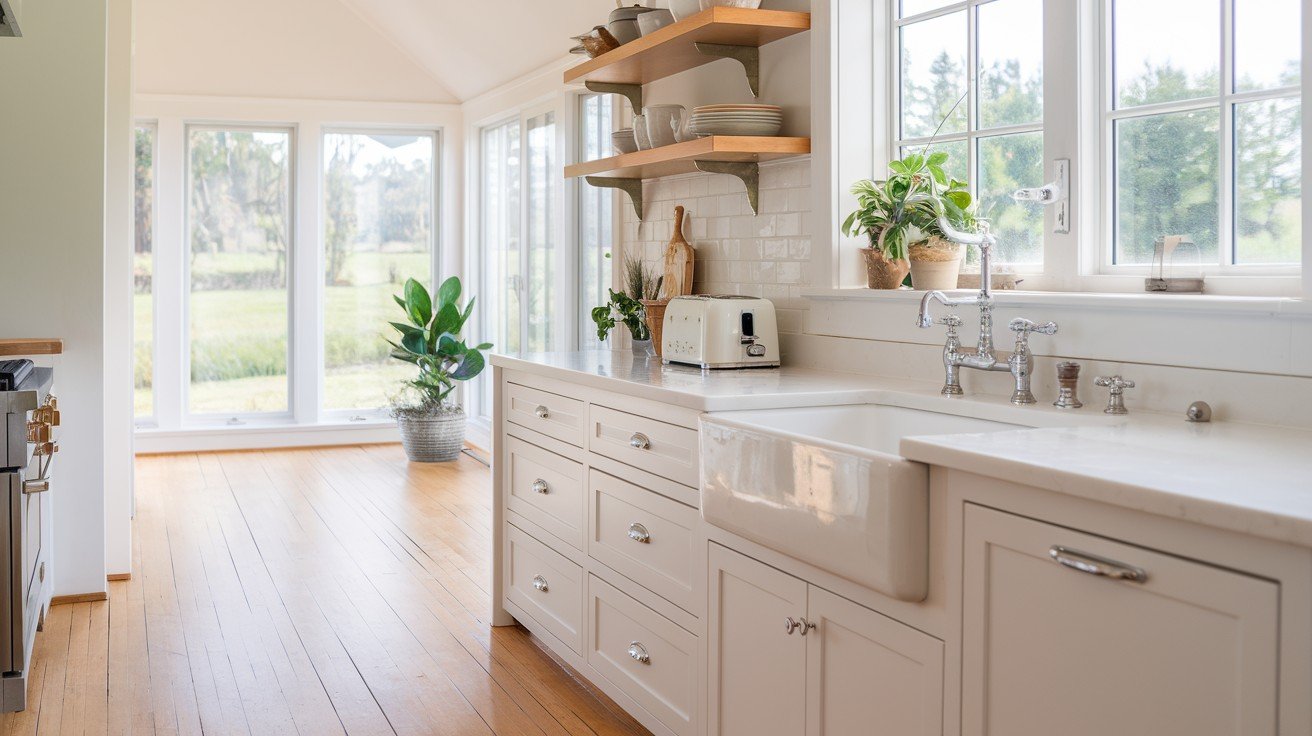
Light, clean appearance with fine, consistent grain patterns creates a fresh, modern foundation. Maple’s pale tone reflects maximum light, making spaces feel open and bright.
The subtle grain adds just enough texture to prevent blandness while maintaining a crisp, contemporary look.
This color works perfectly in kitchens, bathrooms, and modern living spaces where you want clean lines and fresh appeal that complements both colorful and neutral decorating schemes.
Maintenance and Aging: How Timeless Colors Perform Over Time
How Darker vs. Lighter Colors Show Wear and Tear
|
Aspect |
Darker Colors |
Lighter Colors |
|
Dust & Debris |
Shows white dust and pet hair clearly |
Hides light dust and debris well |
|
Scratches |
Light scratches are very visible |
Minor scratches blend with the grain |
|
Water Spots |
Watermarks stand out prominently |
Water spots are less noticeable |
|
Fading |
Sun fading creates uneven patches |
Fading appears more gradual |
|
Dents |
Indentations catch light, more obvious |
Dents blend with natural variation |
|
Cleaning Frequency |
Requires more frequent cleaning |
Less frequent cleaning is needed |
Restaining or Refinishing Options
Most timeless hardwood colors can be refreshed through professional refinishing every 7-10 years.
Lighter stains offer more flexibility for color changes, while darker stains may require complete sanding to go lighter.
Medium tones provide the best balance, allowing both darker and lighter restaining options without extensive preparation work.
Why Some Colors Age More Gracefully?
Medium tones with natural variation hide imperfections better than solid, uniform colors. Neutral undertones remain current longer than bold hues.
Colors matching wood’s natural grain patterns camouflage wear naturally, maintaining their fresh appearance with minimal maintenance over decades of use.
Conclusion
Selecting the right hardwood floor color is one of the most important design decisions you’ll make for your home.
The eleven timeless options we’ve covered, from classic natural oak to sophisticated charcoal, have proven their staying power across decades of changing trends.
Remember that the best choice balances your style with practical considerations.
Medium tones offer the most flexibility for future changes, while lighter colors brighten spaces and darker shades add drama.
Consider your home’s natural light, existing decor, and long-term plans when making your decision.
These enduring colors provide a solid foundation that adapts to your evolving taste while protecting your investment.
Choose wisely, maintain properly, and your floors will reward you with beauty and value that lasts for generations to come.
Frequently Asked Questions
What’s the most versatile hardwood floor color?
Greige and natural oak offer maximum versatility, working seamlessly with both warm and cool color schemes across all design styles.
Do dark floors show more dirt than light floors?
Yes, dark floors reveal dust, pet hair, and light scratches more easily, requiring more frequent cleaning than lighter options.
Can I change my floor color later?
Professional refinishing allows color changes every 7-10 years, though going lighter requires more extensive sanding than going darker.

